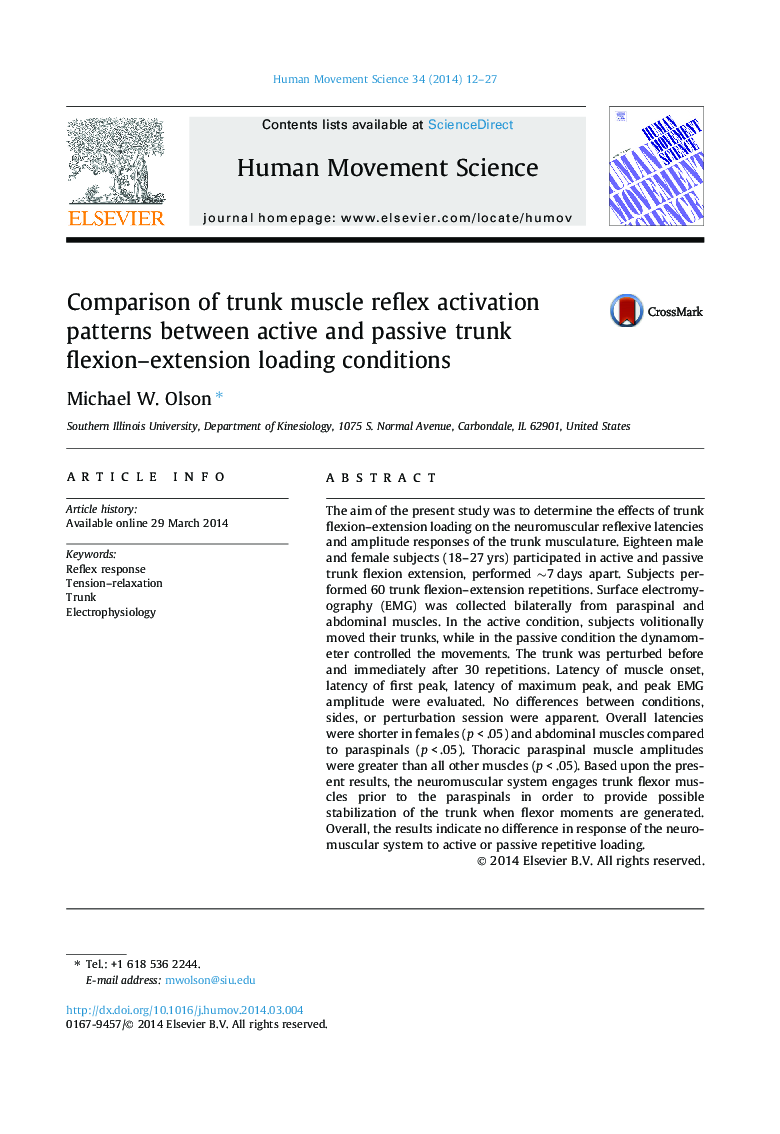| Article ID | Journal | Published Year | Pages | File Type |
|---|---|---|---|---|
| 928407 | Human Movement Science | 2014 | 16 Pages |
•A comparison of active versus non-active movement during trunk flexion–extension.•Muscle latency onsets were examined between active and passive movement conditions.•Onset latencies are shorter in females compared to males in both conditions.•Onset latencies are shorter in abdominal muscles in comparison to the paraspinals.
The aim of the present study was to determine the effects of trunk flexion–extension loading on the neuromuscular reflexive latencies and amplitude responses of the trunk musculature. Eighteen male and female subjects (18–27 yrs) participated in active and passive trunk flexion extension, performed ∼7 days apart. Subjects performed 60 trunk flexion–extension repetitions. Surface electromyography (EMG) was collected bilaterally from paraspinal and abdominal muscles. In the active condition, subjects volitionally moved their trunks, while in the passive condition the dynamometer controlled the movements. The trunk was perturbed before and immediately after 30 repetitions. Latency of muscle onset, latency of first peak, latency of maximum peak, and peak EMG amplitude were evaluated. No differences between conditions, sides, or perturbation session were apparent. Overall latencies were shorter in females (p < .05) and abdominal muscles compared to paraspinals (p < .05). Thoracic paraspinal muscle amplitudes were greater than all other muscles (p < .05). Based upon the present results, the neuromuscular system engages trunk flexor muscles prior to the paraspinals in order to provide possible stabilization of the trunk when flexor moments are generated. Overall, the results indicate no difference in response of the neuromuscular system to active or passive repetitive loading.
